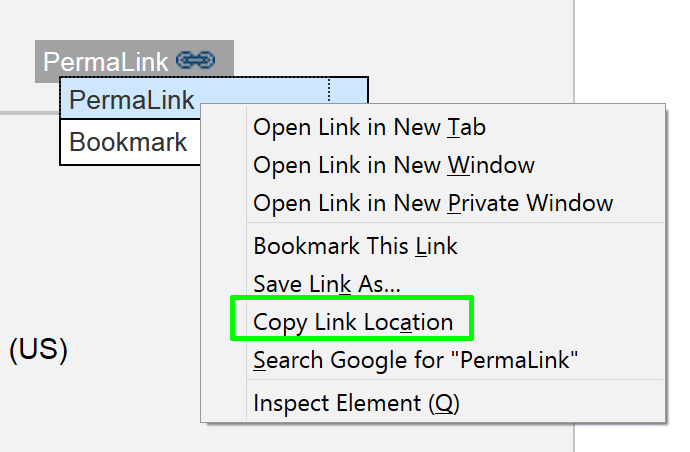When you file a PCT application, of course one of the things that you will do is take steps so that you can view your PCT application in ePCT. Once the newly  filed PCT application is visible to you in ePCT, then there is a Best Practice to be followed, namely proofreading the preview of the PCT publication. Continue reading “Best Practice when filing a PCT application – “pub preview””
filed PCT application is visible to you in ePCT, then there is a Best Practice to be followed, namely proofreading the preview of the PCT publication. Continue reading “Best Practice when filing a PCT application – “pub preview””
Best Practice for getting a priority document to the IB?
A member of the PCT-L listserv recently asked:
For a PCT application filed with the RO/IB, what is the Best Practice for getting a certified copy of my priority document to the IB?
The Best Practice is to use WIPO’s Digital Access Service. Continue reading “Best Practice for getting a priority document to the IB?”
USPTO and Asian family names
There are many cultures, including those in Hungary, China, Japan, Korea, Singpore, and Vietnam, where the family name comes first and the given name comes after the family name. For example Park Geun-hye, the president of South Korea, is the daughter of Park Chung-hee. Park, the president’s first name, is her family name. Geun-hye, the president’s last name, is her given name.
Unfortunately all too often the USPTO doesn’t get this. Continue reading “USPTO and Asian family names”
Why we never use “micro entity” status
We are all accustomed to “large entity” and “small entity” USPTO fees. A small entity gets to pay half price for most USPTO fees, as compared with what a large entity would have to pay.
Micro entity status has been available since the AIA happened in about 2012. A micro entity gets to pay half price for most USPTO fees, as compared with what a small entity would have to pay. That amounts to one-fourth of what a large entity would have to pay.
In the three or so years that have passed, our firm has never even once made use of “micro entity” status for a patent applicant in the USPTO. Why? Continue reading “Why we never use “micro entity” status”
An entity can be both large and small
It is all too easy to get into a rut, (a) telling clients that the way to figure out whether an entity is large or small is by counting the employees and (b) proceeding on the assumption that if a client was small in its previous patent application, then of course the client will likewise be small in its next patent application.
But an entity can be simultaneously large and small.
A feature USPTO needs to add – permalinks
In Patentscope and ePCT, WIPO offers “permalinks”. These are web links that you can copy and use elsewhere, such as intranets and emails to clients.  Similarly in European Patent Register, EPO offers such web links.
Similarly in European Patent Register, EPO offers such web links.
Indeed the TSDR system of USPTO offers URLs that can be used this way. So why doesn’t USPTO offer such links?
Alert list member Henry Blanco White points out that USPTO provides complicated instructions for constructing links to particular records in the USPTO Patent Full-Text and Image Database. It’s not simply a link that you can right-click on and save. But it is apparently a way to construct a link.
USPTO needs to offer such links in Public PAIR and in Private PAIR. USPTO also needs to offer such links in the Patent Application Full Text and Image Database.
(Updated June 23 to reflect that USPTO does offer constructable links in the USPTO Patent Full-Text and Image Database.)
Do your own patent application customer number changes!
Recently I blogged about three nice new Private PAIR features — USPTO nice again — this time letting you check customer numbers and Now you can update entity size yourself! and Get your own new USPTO customer numbers. Here is a fourth nice new Private PAIR feature. You can update the customer number associated with a patent application or patent yourself. Continue reading “Do your own patent application customer number changes!”
Get your own new USPTO customer numbers
Last week I blogged about two new Private PAIR features — USPTO nice again — this time letting you check customer numbers and Now you can update entity size yourself! Here’s another nice new Private PAIR feature just released by USPTO — you can obtain a new customer number with just a few mouse clicks. Continue reading “Get your own new USPTO customer numbers”
US PCT filers can soon pick Japan as ISA and IPEA
(Note the follow-up posting that this ISA choice is now available to US filers.)
Filers of PCT applications who file in RO/US will soon have the option to pick the Japanese Patent Office as their International Searching Authority and International Preliminary Examining Authority. Continue reading “US PCT filers can soon pick Japan as ISA and IPEA”
Intellectual property in “Silicon Valley”
The HBO television series Silicon Valley is now in its second season. I blogged about intellectual property issues in this series during its first season. The series is, of course, a work of fiction but its second season offers food for thought on patent issues and trademark issues. Continue reading “Intellectual property in “Silicon Valley””
